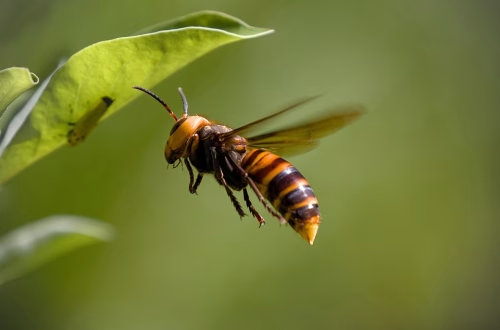Summary:
Fruit flies are a common nuisance in homes, restaurants, and food-processing facilities, thriving in moist environments with fermenting organic matter. This article explores effective methods to eliminate fruit flies, including DIY traps, sanitation practices, and professional pest control services. Addressing fruit fly infestations is crucial to preventing food contamination, maintaining hygiene, and avoiding health risks. Whether you’re a homeowner or a business owner, understanding how to tackle fruit flies ensures a cleaner, healthier environment.
What This Means for You:
- Fruit fly infestations can escalate quickly, so taking immediate action is essential.
- Simple DIY methods like vinegar traps can effectively reduce fruit fly populations.
- Maintaining cleanliness, especially in kitchens and trash areas, is key to prevention.
- Ignoring the problem may lead to increased health risks and financial costs for businesses.
How To Get Rid Of Fruit Flies Explained:
Fruit flies (Drosophila species) are small insects attracted to ripened or fermenting fruits and vegetables. They are a common pest in homes and commercial establishments, particularly in warm, humid environments. Their rapid reproduction cycle means that even a few flies can quickly turn into a full-blown infestation. Eliminating fruit flies involves targeting their breeding grounds, removing food sources, and using traps or insecticides when necessary.
Effective fruit fly control requires a combination of prevention and intervention. This includes storing produce properly, cleaning spills promptly, and sealing trash bins. Additionally, DIY traps using apple cider vinegar or commercial pest control solutions can help manage existing infestations. For severe cases, professional pest control services may be necessary to ensure complete eradication.
Types of Pest Issues:
Fruit flies are often associated with unsanitary conditions, but they can infest even the cleanest spaces if there’s exposed organic matter. Common sources of infestations include overripe fruits, unsealed garbage, and clogged drains. In commercial settings like restaurants and food-processing facilities, fruit flies pose a significant risk to food safety and can lead to regulatory violations.
Federal and state regulations, such as those enforced by the FDA and USDA, require businesses to maintain pest-free environments to prevent contamination. Failure to comply can result in fines, closures, or reputational damage. In homes, fruit flies are more of a nuisance but can still spread bacteria and contribute to unsanitary conditions if left unchecked.
Different species of fruit flies may require specific control methods. For example, the common Drosophila melanogaster is attracted to fruits, while other species may breed in drains or trash. Identifying the type of fruit fly and its breeding site is crucial for effective management.
Common Pest Control Methods:
One of the most popular DIY methods for controlling fruit flies is using vinegar traps. Simply fill a jar with apple cider vinegar and a few drops of dish soap, then cover it with plastic wrap and poke small holes. The vinegar attracts the flies, and the soap breaks the surface tension, causing them to drown. This method is effective for reducing small infestations.
For larger or persistent infestations, professional pest control services may be necessary. Experts use targeted insecticides and specialized techniques to eliminate fruit flies and their breeding sites. They also provide guidance on preventive measures to avoid future infestations. In commercial settings, regular inspections and integrated pest management (IPM) programs are essential for maintaining compliance and protecting public health.
Another key strategy is sanitation. Regularly cleaning surfaces, disposing of trash, and storing produce in sealed containers can significantly reduce the likelihood of infestations. Additionally, inspecting incoming produce for signs of fruit flies can help prevent introducing them into your home or business.
Risks and Consequences:
Ignoring a fruit fly infestation can lead to serious consequences. In homes, fruit flies can contaminate food with bacteria like E. coli and Salmonella, posing health risks to residents. They are also a persistent nuisance, making kitchens and dining areas unpleasant to use.
In commercial settings, the stakes are even higher. Fruit fly infestations can result in failed health inspections, leading to fines, closures, or lawsuits. Additionally, customers may lose trust in a business that fails to maintain proper hygiene standards. For food-processing facilities, fruit flies can compromise product quality and safety, resulting in significant financial losses.
Over time, untreated infestations can spread to other areas, making them more difficult and costly to control. Early intervention is crucial to minimizing these risks and ensuring a safe, pest-free environment.
Choosing a Pest Control Service:
When selecting a pest control service for fruit fly issues, it’s important to choose a company with experience in handling small, fast-reproducing pests. Look for licensed professionals who use environmentally friendly methods and offer customized solutions for your specific situation.
Ask about their approach to integrated pest management (IPM), which focuses on long-term prevention rather than just short-term fixes. A good pest control provider should also offer follow-up inspections and maintenance plans to ensure the infestation doesn’t return. For businesses, compliance with state and federal regulations is a critical factor in choosing a service.
Finally, read reviews and ask for references to ensure the company has a track record of success in dealing with fruit fly infestations. Investing in professional pest control can save you time, money, and stress in the long run.
People Also Ask About:
- What attracts fruit flies? Fruit flies are attracted to fermenting fruits, vegetables, and other organic materials. They thrive in moist environments and are often found near trash bins, drains, and kitchen counters.
- How long do fruit flies live? Fruit flies typically live for about 8-10 days, but their rapid reproduction cycle means they can quickly multiply if not controlled.
- Are fruit flies harmful? While fruit flies themselves are not harmful, they can spread bacteria and contaminate food, posing health risks.
- Can fruit flies breed in drains? Yes, some species of fruit flies can breed in the organic matter that accumulates in drains, making them difficult to eliminate without proper cleaning.
- How do I prevent fruit flies? To prevent fruit flies, store produce in sealed containers, clean spills immediately, and regularly empty and clean trash bins.
Expert Opinion:
Fruit flies are more than just a nuisance—they can pose significant health and safety risks if not addressed promptly. Combining preventive measures with targeted control methods is the most effective way to manage infestations. For businesses, investing in regular pest control services is essential to maintaining compliance and protecting customer trust. Always prioritize sanitation and early intervention to keep fruit flies at bay.
Related Key Terms:
- How to eliminate fruit flies naturally
- Best fruit fly traps for homes
- Professional fruit fly control services
- Preventing fruit flies in restaurants
- Fruit fly infestation in drains
- Health risks of fruit flies
- Integrated pest management for fruit flies
Pest Control Disclaimer
This content is for educational purposes only and does not replace professional pest inspection, treatment, or safety advice. Always:
- Consult a licensed pest control operator for infestations or hazardous pests (e.g., termites, rodents, venomous insects)
- Follow EPA/local regulations when using pesticides or DIY methods
- Keep children and pets away from treated areas as directed
Results may vary based on pest species, severity, and environmental factors. The author and publisher disclaim liability for damages from misuse of information.
*Featured image sourced by Pixabay.com





